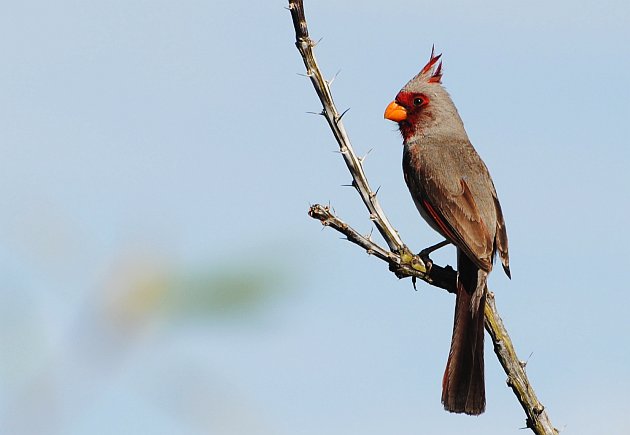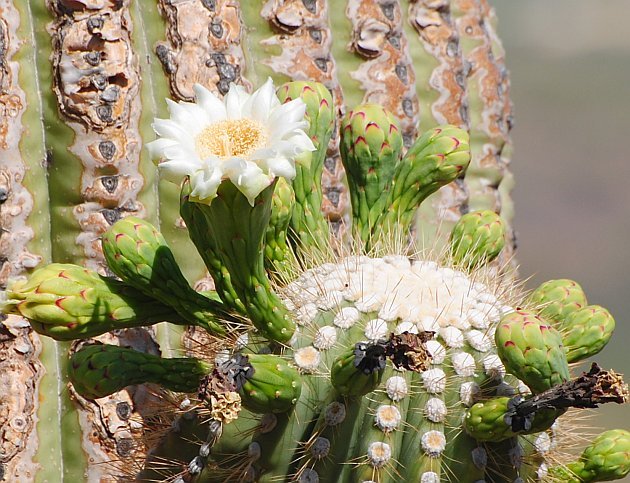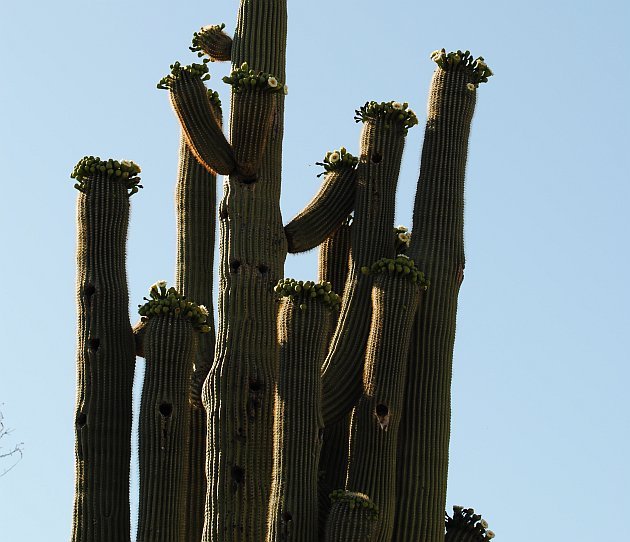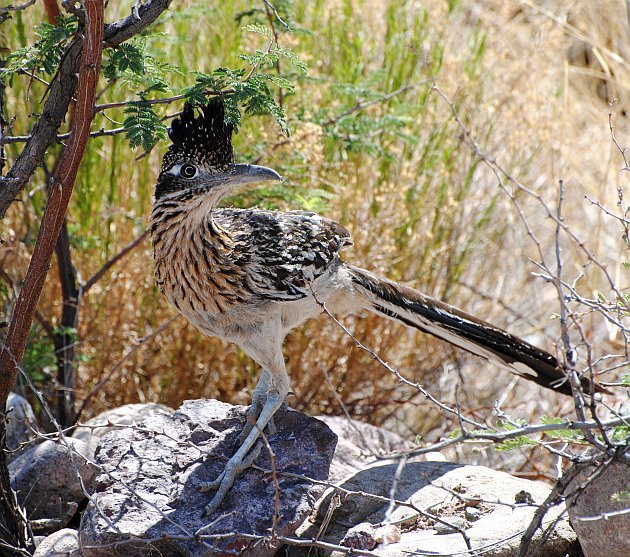
Much like how Everglades National Park flanks the western border of metropolitan Miami, Florida, Saguaro National Park flanks both the eastern and western outskirts of Tucson, making for easy access to residents and tourists alike who spend time in that city. Originally established by President Herbert Hoover in 1933 as the first national park or monument set aside to protect a species a plant and made into a national park through legislation passed by Bill Clinton in 1994, Saguaro National Park protects some of the best examples of Sonoran Desert habitat complete with beautiful forests of iconic saguaro cactus. I had the pleasure of paying this national park a visit on a trip to Arizona in late May, and I was immediately struck by how important this species of plant is to this ecosystem. Thriving in a hostile, rocky, arid environment, these cacti are oases for nearly all vertebrate species that have evolved to live in the Sonoran Desert.
Many bird species were observed feeding in the blooms of these cacti.
The Cactus Forest Drive loop, which is part of the national park’s eastern unit, is a paved route that winds through spectacular examples of saguaro cactus forest. Here, as I kept my ears and eyes open for my target species for the day — Gilded Flicker — I noticed that many of these large columnar plants were blooming, attracting a wide range of birds that included White-winged Dove, Curve-billed Thrasher, and Gila Woodpecker. Even coveys of Gambel’s Quail, usually associated with feeding in the underbrush, were feeding ten to fifteen feet off the ground on these flowers.
Saguaro Cactus also provides shelter and nesting sites for a wide range of desert birds as can be seen by the many nest cavities on this specimen.
These largest of North American cactus also provide shelter and nesting sites for a variety of bird species. Gila Woodpeckers and Gilded Flickers, keystone species in of themselves, bore holes into the columnar cactus which provide nesting sites for the local subspecies of Purple Martin as well as Elf Owl, American Kestrel, and Brown-crested Flycatcher. Perhaps because of the heat and the lack of insulation which the cactus can provide, Purple Martins do not nest in man-made houses in Arizona. The race of Purple Martin found here is completely dependent on saguaro for nesting sites.
Greater Roadrunner, an apex predator of the Sonoran habitat in Saguaro National Park.
The saguaro cactus forests along the drive also support a host of species which are directly or indirectly dependent on these enormous desert plants, including such iconic and charismatic species such as Greater Roadrunner, Black-tailed Jackrabbit, and Gila Monster. Roadrunners, giant ground cuckoos of the desert, are often seen dashing across the road, although occasionally they will approach a parked car out of curiosity like the individual in the above image. Common birds of this habitat not already mentioned include Cactus Wren, Ash-throated Flycatcher, Verdin, and Pyrrhuloxia. I saw my first Gilded Flickers, which are reasonably common here, not too far from the start of the loop by listening for their calls and scanning the tops of snags and cactus.
Because this fascinating habitat is only within a thirty minute drive (or less) from Tucson, it is a fantastic way to start a trip in southeast Arizona to see a host of iconic Sonoran desert species which will not be encountered in the various ‘green’ canyons in the nearby mountains.














Sounds like the start of an amazing trip! Those blooming cacti are really something!
I agree, it is a great starting point for someone’s first visit to Arizona. Many travelling birders who do the normal SE AZ circuit miss this park (and habitat) entirely.